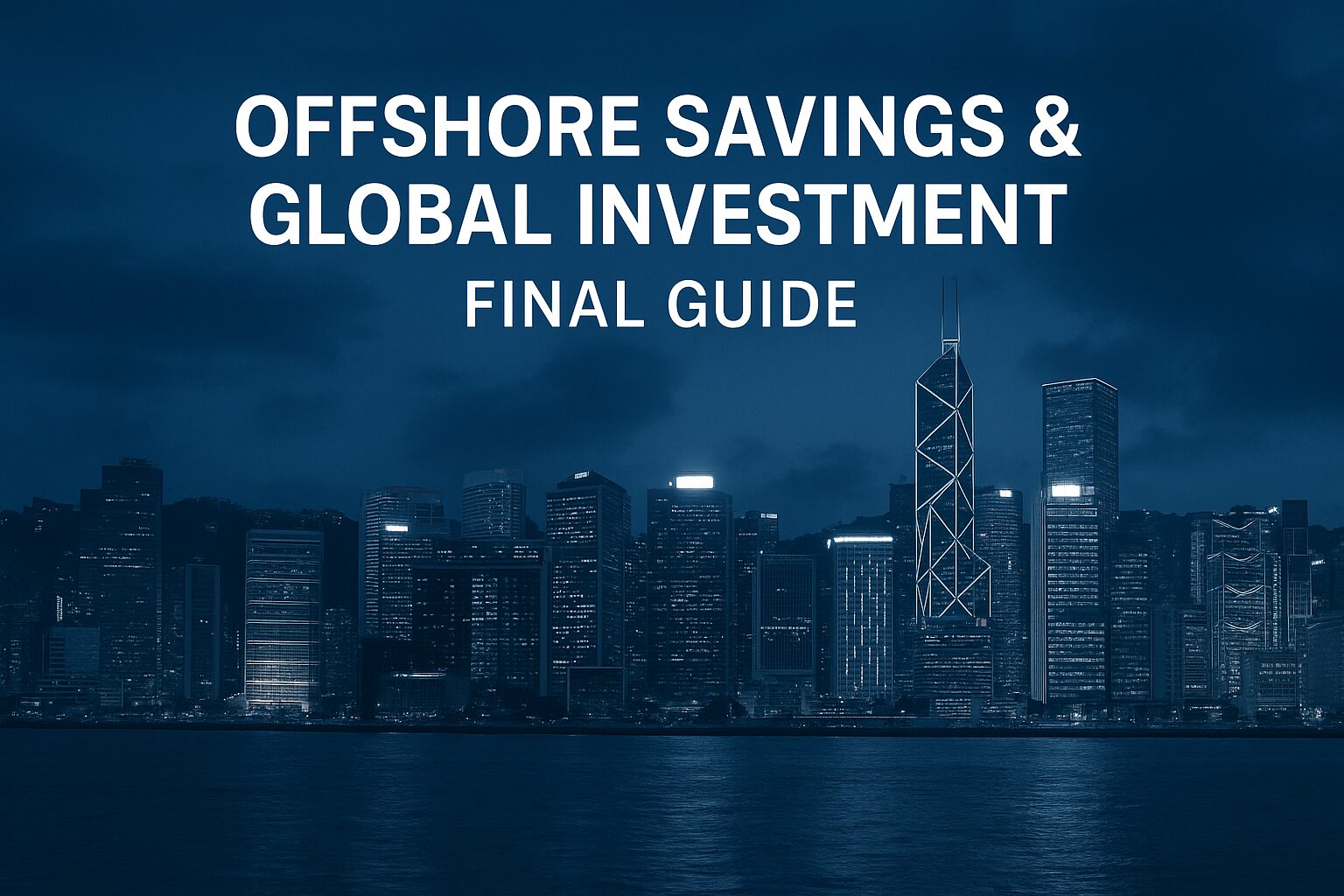Why a Consolidated Strategy Matters
In today’s interconnected economy, financial security can no longer be defined within the borders of a single nation. Inflation, currency volatility, shifting tax laws, and political uncertainty create an environment where global diversification is no longer optional—it’s essential.
Over the past five chapters, we explored the core pillars of offshore savings and global investment strategies, from multi-currency accounts to tax residency optimization, passive income portfolio design, and compliance frameworks. This final installment serves as a comprehensive recap and action-oriented roadmap, helping you move from theory to execution with clarity and confidence.
1. Key Insights Recap from Parts 1–5
Part 1: The Necessity of Offshore Savings & Global Investment Strategies
Offshore structures are not just tools for the ultra-wealthy. They are risk-mitigation and wealth-preservation mechanisms for anyone seeking long-term security. By holding assets abroad, investors gain protection against domestic currency depreciation, capital restrictions, and inflation shocks.
🔗 See full guide in Part 1: Why Offshore Savings Matter
Part 2: Multi-Currency Accounts & FX Hedging
Access to multi-currency banking empowers investors to hold, convert, and transact in various currencies at favorable rates. Paired with FX hedging tools—such as forward contracts or currency ETFs—investors can shield themselves from volatility while maintaining flexibility for global transactions.
🔗 Explore detailed strategies in Part 2: Multi-Currency Accounts & FX Hedging
Part 3: Residency & Tax Optimization
Taxation is one of the most overlooked but impactful areas of global finance. With proper planning, individuals can leverage Non-Dom regimes, territorial taxation systems, or residency-by-investment programs to reduce their global tax burden legally.
🔗 Read more in Part 3: Residency Planning & Tax Optimization
Part 4: Designing a Global Passive Income Portfolio
Financial independence requires sustainable, recurring income streams. A balanced passive income portfolio combines:
- Dividend-paying equities for cash flow and growth
- Government & corporate bonds for stability
- Global REITs for real estate exposure
- Broad-market ETFs for diversification
Together, these instruments create a resilient foundation for long-term wealth generation.
🔗 See portfolio examples in Part 4: Building a Passive Income Strategy
Part 5: Risks, Compliance, and Governance
Every opportunity carries risks: market volatility, geopolitical tensions, and regulatory crackdowns. The key is not to avoid risks, but to govern them with compliance frameworks, due diligence, and proper documentation. Offshore investing is sustainable only when executed transparently and in full alignment with legal requirements.
🔗 Review essential safeguards in Part 5: Risk & Compliance Guide
2. Global Wealth Roadmap: Step-by-Step Checklist
To move from concepts to implementation, use this execution checklist:
Step 1: Secure Offshore Banking Access
- Research reputable jurisdictions (e.g., Singapore, Switzerland, Luxembourg).
- Open at least one multi-currency account with online accessibility.
- Maintain proper documentation for source of funds to remain compliant.
Step 2: Diversify Currency Holdings
- Allocate savings across USD, EUR, CHF, and select emerging-market currencies.
- Use FX hedging instruments to reduce exposure to sudden devaluations.
Step 3: Optimize Tax Residency
- Evaluate your current country’s tax obligations.
- Research alternative residency programs (Portugal NHR, UAE zero-tax residency, Caribbean citizenship-by-investment).
- Consult international tax experts before relocating.
Step 4: Build a Passive Income Portfolio
- Start with global dividend stocks across developed and emerging markets.
- Add bonds to balance risk and ensure stable yield.
- Include international REITs for real estate diversification.
- Use ETFs for broad coverage and low-cost exposure.
Step 5: Compliance & Risk Governance
- Maintain transparent banking and tax records.
- Understand CRS (Common Reporting Standard) and FATCA requirements.
- Conduct periodic portfolio reviews to adapt to market and regulatory changes.
3. Common Pitfalls to Avoid
- Over-concentration: Relying solely on one jurisdiction or asset class.
- Ignoring tax laws: Leading to penalties or legal disputes.
- Chasing yield: Prioritizing short-term gains without risk assessment.
- Neglecting liquidity: Locking funds into inaccessible assets.
4. Long-Term Outlook: Beyond Diversification
Global investment strategies are not about chasing trends; they are about building intergenerational wealth resilience. The investor of the future will not be defined by a single passport, currency, or tax system but by the ability to navigate and leverage multiple systems simultaneously.
By integrating offshore banking, diversified investments, tax efficiency, and risk governance, individuals can create a financial ecosystem that thrives regardless of local crises.
Conclusion: From Strategy to Execution
The journey to global financial freedom does not end with knowledge—it begins with action. Offshore savings and global investment strategies offer a pathway to:
- Protect wealth against inflation and political instability
- Access opportunities in global markets
- Reduce tax burdens legally and transparently
- Generate sustainable passive income
For readers who followed this series from Part 1 to Part 5, this final guide provides the practical blueprint to put everything into motion.
Your next step is to begin with small, compliant moves—open a multi-currency account, start a globally diversified ETF position, or schedule a consultation with an international tax advisor.
Global wealth is not built overnight, but step by step, across borders, with discipline and foresight.
📌 Next Content Preview:
In our upcoming series, we’ll explore “Global Tax Optimization & Offshore Structures – Practical Tools for High-Net-Worth Individuals”, diving deeper into tax treaties, offshore trusts, and corporate structures.
